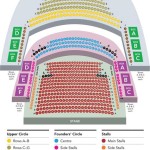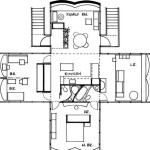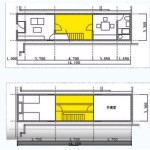Creating House Plans: Essential Considerations
Designing a house plan is a crucial step in the construction process, as it serves as a blueprint for your dream home. While it may seem like a daunting task, approaching it systematically with careful consideration of essential aspects can lead to a successful outcome. Here are some key elements to keep in mind when creating house plans:
1. Determine Your Needs and Preferences:
Before putting pen to paper, take time to assess your lifestyle, family size, and future plans. Consider the number of bedrooms, bathrooms, and other spaces you require. Think about the flow of the house, how you want to use each area, and any specific preferences you have regarding architectural style, size, and amenities.
2. Research Building Codes and Regulations:
It is imperative to familiarize yourself with the building codes and regulations applicable to your location. These codes dictate aspects such as minimum room sizes, fire safety requirements, and energy efficiency standards. Ensuring compliance with these regulations is essential for obtaining building permits and ensuring your house is safe and符合规范的.
3. Sketch a Floor Plan:
Start by sketching out a floor plan that outlines the layout of your house. This rough draft will serve as a foundation for further planning and allow you to experiment with different configurations. Experiment with different arrangements to optimize space utilization, ensure proper flow, and create a comfortable and functional living environment.
4. Consider Architectural Style and Aesthetics:
The architectural style of your house should align with your preferences and complement the surrounding environment. Whether you prefer a traditional, contemporary, or modern design, ensure that the exterior and interior aesthetics are cohesive. Think about the type of facade, windows, doors, and materials you want to use.
5. Optimize Natural Light and Ventilation:
Natural light and ventilation are crucial for creating a healthy and comfortable living space. Plan the placement of windows and skylights to maximize illumination and cross-ventilation. Consider passive solar design principles to minimize energy consumption and create a sustainable home.
6. Plan for Storage and Utility Spaces:
Adequate storage is essential for organizing and maintaining a clutter-free home. Incorporate built-in closets, pantries, and storage units to accommodate your belongings. Don't forget to include utility spaces such as a laundry room, mechanical room, and garage to keep essential systems out of sight.
7. Consult with Professionals:
While it is possible to create house plans independently, consulting with professionals such as architects or designers can provide valuable expertise and ensure the technical accuracy of your plans. They can help you navigate building codes, optimize space planning, and incorporate design features that meet your specific requirements.
8. Review and Refine:
Once you have a preliminary plan, take time to review it carefully and seek feedback from others. Consider the functionality, aesthetics, and overall design to identify areas for improvement. Adjust the layout, dimensions, and details to create a plan that perfectly suits your needs and desires.
Conclusion:
Creating house plans is a complex but rewarding process. By considering these essential aspects, you can develop a blueprint that not only meets your functional requirements but also reflects your personal style and aspirations. Remember to prioritize your needs, research regulations, optimize space, consult with experts, and refine your plans to achieve the home of your dreams.

Floor Plans Learn How To Design And Plan

House Plans How To Design Your Home Plan

Floor Plans Types Symbols Examples

Where You Can Buy House Plans Live Home 3d

House Plans How To Design Your Home Plan

How To Create A Small House Floor Plan That Works For You

Make Your Own Blueprint How To Draw Floor Plans

How To Draw A Floor Plan Live Home 3d

Create Floor Plan

Floor Plans Learn How To Design And Plan








